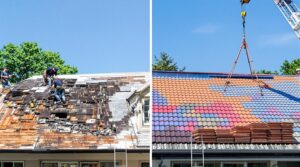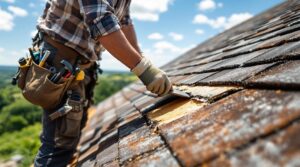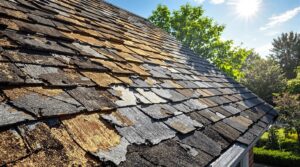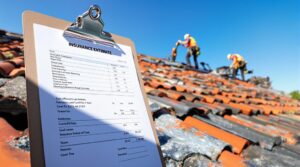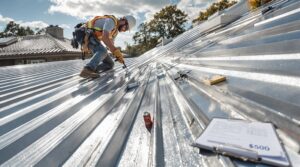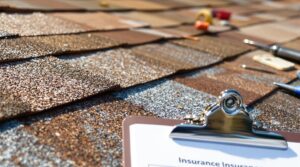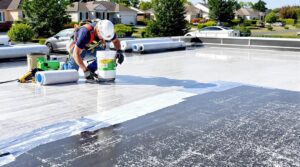Ever wondered whether your roof replacement counts as a repair or improvement? Let's clear up this common homeowner head-scratcher!
In the eyes of the IRS and real estate pros, replacing your roof isn't just patching up a few shingles – it's a full-fledged capital improvement. Think of it like giving your home a brand-new protective hat rather than just stitching up holes in an old one.
Why does this distinction matter? Well, when you upgrade your entire roofing system, you're not just fixing today's problems – you're investing in your home's future. Just like upgrading from a flip phone to a smartphone, a new roof brings modern materials, better protection, and enhanced value to your property. The numbers don't lie: homeowners typically see a 60-70% return on their investment through increased property value.
This classification has real-world implications for your wallet. It affects how you handle taxes, process insurance claims, and plan your long-term financial strategy. So while repairs might feel like putting a Band-Aid on a problem, a complete roof replacement is more like giving your home a major wellness upgrade that’ll keep it healthy and valuable for years to come. Additionally, understanding your property’s classification can help you navigate various financial products available in the market, including damaged roof insurance coverage options. It’s crucial to explore these options thoroughly, as they can significantly impact your financial security in the event of unforeseen issues. By investing in a new roof and leveraging appropriate insurance coverage, you not only enhance your property’s value but also safeguard your investment against future risks.
Key Takeaways
Wondering if your roof project counts as a repair or improvement? Let's clear up the confusion!
Think of your roof like a protective shield – when you completely replace it, you're not just patching up armor, you're upgrading the entire defense system. That's why a full roof replacement typically falls into the improvement category. It's a game-changer that boosts your property's value and gives your home a fresh lease on life.
Here's the key difference: fixing a few shingles after a storm? That's a repair. But swapping out the entire roof with new materials? You've just stepped into improvement territory. This distinction matters, especially come tax season, since improvements need to be depreciated over time, while repairs can be written off immediately.
Want to know the real kicker? A new roof isn’t just about keeping the rain out – it’s an investment powerhouse. You’ll typically recoup 60-70% of your costs, and your property value could jump by $20,000 or more. That’s like getting a significant portion of your money back while upgrading your home’s curb appeal! Additionally, many homeowners find that a new roof can lead to lower home insurance premiums, as newer roofs are often seen as a safer option by insurers. However, it’s essential to consider the potential for a home insurance increase after roof replacement, as some policies may adjust based on the total value of your upgrades. Ultimately, investing in a new roof not only enhances the durability of your home but also positions it better in the real estate market, making it a win-win for any homeowner.
Going fancy with premium materials? Maybe switching from asphalt to slate or metal? You're definitely in improvement territory now. These upgrades don't just change how your home looks – they transform its durability, energy efficiency, and market value.
Remember, if you're giving your roof a complete makeover rather than a quick fix, you're making an improvement that'll protect your investment for years to come.
Understanding the Difference Between Repairs and Capital Improvements
When evaluating whether a roof replacement constitutes a repair or capital improvement, it is essential to understand the fundamental distinctions between these two categories.
Repair definitions focus on restoring property to its original condition, addressing damage or wear without adding considerable value. Maintenance activities serve as preventive measures to avoid deterioration.
Repairs restore what exists without enhancing value, while maintenance prevents future damage through regular upkeep and care.
Capital improvements, conversely, enhance property value through substantial modifications that extend the asset's useful life or adapt it for new purposes. Improvement examples include major structural changes, material upgrades, or complete system replacements.
The financial treatment differs markedly: repairs are typically expensed immediately, while capital improvements must be depreciated over time. This distinction impacts tax implications and long-term property value considerations, making accurate classification vital for property owners and financial planning.
Standard homeowners insurance policies generally treat sudden damage repairs differently than improvements, with RCV policies covering between 70-100% of repair costs while excluding maintenance-related upgrades.
Tax Treatment of Roof Replacements
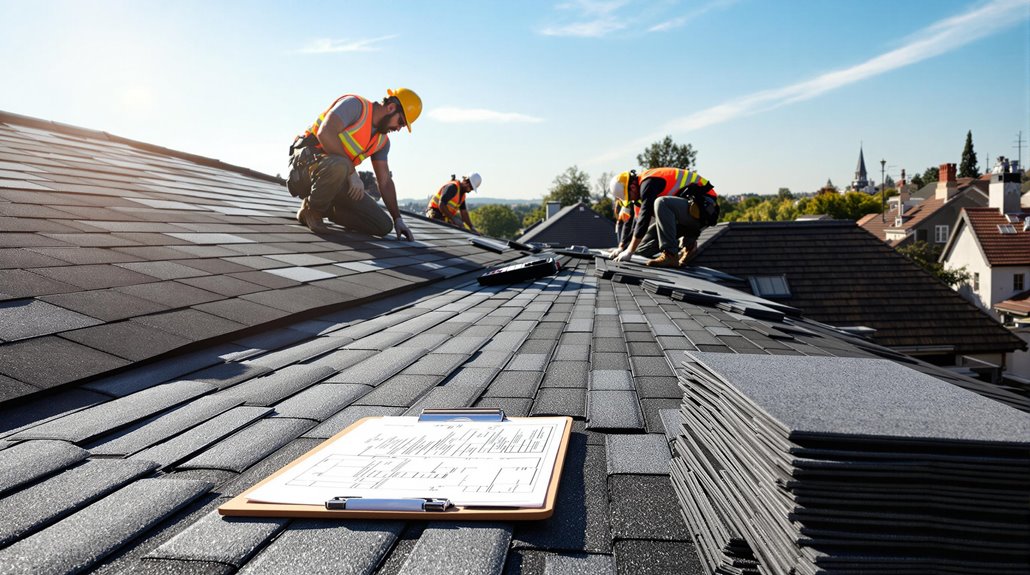
Understanding how tax authorities treat roof replacements greatly impacts property owners' financial decisions and reporting requirements.
The Internal Revenue Service generally does not allow tax deductions for residential roof replacements, as these are classified as capital improvements rather than repairs. However, the cost of the replacement contributes to the property's cost basis, which can affect capital gains calculations when selling the property.
For rental properties, different rules apply. Property owners can depreciate the roof replacement cost over several years, effectively reducing their taxable rental income.
While energy-efficient roofing materials may enhance property value, they typically don't qualify for specific tax credits. Maintaining detailed documentation of all roof-related expenses is essential for accurate depreciation calculations and potential future tax implications.
Working with public adjusters can help ensure accurate valuation of roof damage and maximize potential insurance settlements for covered losses.
Factors That Determine Repair vs. Improvement Status
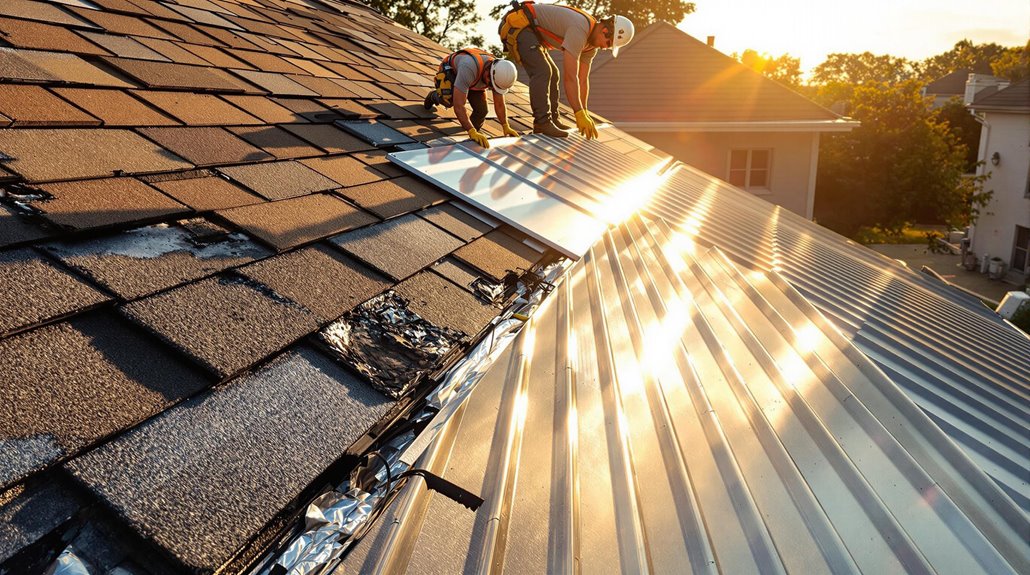
The classification of a roof replacement as either a repair or improvement depends on several key factors that require careful evaluation.
The extent of work performed, including whether it involves partial or complete replacement, along with the overall cost and impact on property value, serves as primary determinants in this assessment.
The durability and quality of new materials compared to the original roofing, particularly when upgrades are involved, further influences the categorical distinction between repair and improvement status.
When choosing premium materials like metal roofing systems that last 40-75 years compared to traditional asphalt shingles, the project typically qualifies as an improvement rather than a repair.
Extent of Work Performed
Determining whether roof work constitutes a repair or improvement largely depends on the scope and nature of the performed tasks. Repair techniques typically address isolated issues like damaged shingles or localized leaks, while replacement options involve extensive removal and installation of new materials. The extent of work directly influences its classification and subsequent financial implications. Additionally, understanding the specific methods and materials used in the process plays a vital role in the classification. Homeowners seeking to maintain or enhance their property should first assess their needs and determine how to repair a roof appropriately. This knowledge not only aids in the decision-making process but also ensures that the project meets both functional and aesthetic goals.
| Work Type | Scope of Work | Classification | Impact |
|---|---|---|---|
| Minor Repairs | <30% roof area | Maintenance | Preserves condition |
| Patch Work | Isolated sections | Repair | Extends life |
| Partial Replace | 30-70% roof area | Major Repair | Significant fix |
| Full Replace | Complete system | Improvement | Enhances value |
The distinction becomes particularly significant when the work involves upgrading materials or addressing structural deficiencies, potentially qualifying as a capital improvement rather than routine maintenance. Insurance coverage limits play a crucial role in determining whether full replacement or repairs are financially feasible for homeowners.
Cost and Value Impact
Analyzing cost and value implications plays a pivotal role in classifying roof work as either a repair or improvement. A thorough cost analysis considers both immediate expenses and long-term investment returns.
While repairs typically involve lower upfront costs, complete replacements often qualify as capital improvements due to their substantial impact on property value and extended lifespan.
- Financial scope encompasses initial costs, warranty coverage, and potential tax incentives.
- Property value enhancement through improved curb appeal, marketability, and appraisal impact.
- Long-term economic benefits including reduced maintenance costs, energy efficiency gains, and extended durability.
The classification largely depends on how the work affects the property's overall worth and functionality, with improvements generally providing more substantial and lasting economic benefits compared to temporary repairs.
Insurance policies offering replacement cost value provide the highest potential for treating roof work as a capital improvement rather than a repair.
Durability and Material Changes
Durability factors and material changes serve as critical determinants in classifying roof work as either a repair or enhancement. When property owners opt for material upgrades that enhance longevity and performance beyond the original specifications, the work typically qualifies as an improvement. This is particularly evident when shifting from standard asphalt shingles to more durable options like metal or tile roofing systems.
The implementation of sustainability practices through modern roofing materials further strengthens the classification as an improvement. These advanced materials often feature enhanced weather resistance, superior insulation properties, and extended lifespans compared to traditional options.
Additionally, proper installation techniques and the integration of current material innovations can transform what might initially appear as a repair into a significant property enhancement that adds long-term value and durability.
Impact on Property Value and Assessment
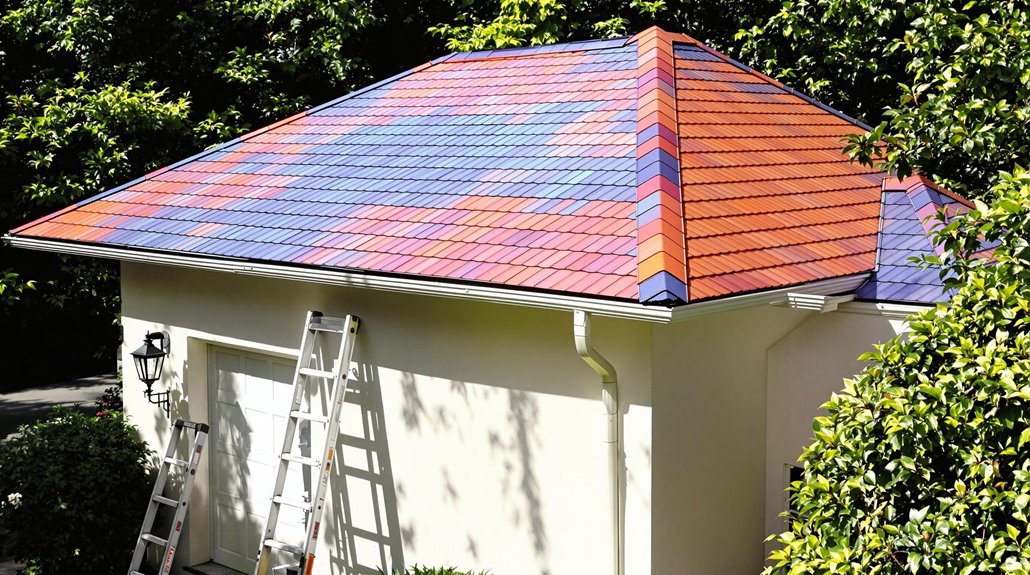
The installation of a new roof typically yields a substantial return on investment, with homeowners recouping 60-70% of costs through increased property value.
Market data indicates that homes with new roofs command higher prices and sell faster than comparable properties with aging roofs, making it a significant long-term investment consideration.
Property assessments often reflect the enhanced value of new roofing systems, particularly when installations are properly documented with warranties and utilize modern, energy-efficient materials.
Market Value After Installation
Installing a new roof considerably impacts a property's market value through multiple channels of appreciation. The enhancement typically yields a 60-70% return on investment through increased property valuation, while simultaneously improving insurability and market appeal.
Current market trends indicate that buyers prioritize properties with well-maintained roofs, as they represent reduced future maintenance costs and immediate structural integrity.
- Property appraisals can increase by up to $20,000 or more with new roofing installation.
- Buyer preferences strongly favor homes with recently replaced roofs, enhancing marketability.
- Insurance companies often offer more favorable premium rates for properties with new roofs.
The roof's material quality, design compatibility, and proper installation documentation collectively contribute to maximizing the property's market value, making it a significant capital improvement rather than a simple repair.
Long-term Investment Returns
Strategic investment in roof replacement delivers substantial long-term financial benefits beyond immediate property value increases.
A thorough cost analysis reveals returns on investment typically ranging from 60% to 80%, with additional value derived from enhanced energy efficiency and reduced maintenance expenses.
As an investment strategy, roof replacement demonstrates particular strength in its impact on property assessment and marketability.
The capital improvement classification may provide tax advantages, while the installation of modern roofing materials can markedly reduce ongoing energy costs.
Statistical data indicates that properties with new roofs command stronger market positions, expedite sales processes, and simplify property inspections.
Regional variations in weather conditions and market demands can further amplify these returns, particularly in areas prone to severe climate conditions.
Assessment Impact Considerations
Thorough property assessments demonstrate that roof replacement greatly influences both immediate and long-term property valuations. The impact extends beyond aesthetic improvements, with property values potentially increasing by 60% of the installation cost.
A detailed roof assessment often reveals significant tax implications, as improvements can affect local property tax assessments based on municipal regulations.
- New roofs can increase home appraisal values by up to $20,000 or more, depending on material quality and installation.
- Property tax adjustments vary by jurisdiction, with some areas offering special considerations or exemptions for roof improvements.
- The correlation between roof condition and property value directly influences assessment outcomes, affecting both market value and tax obligations.
The strategic timing of roof replacement should consider these assessment impacts to optimize financial outcomes.
Legal Guidelines and IRS Regulations
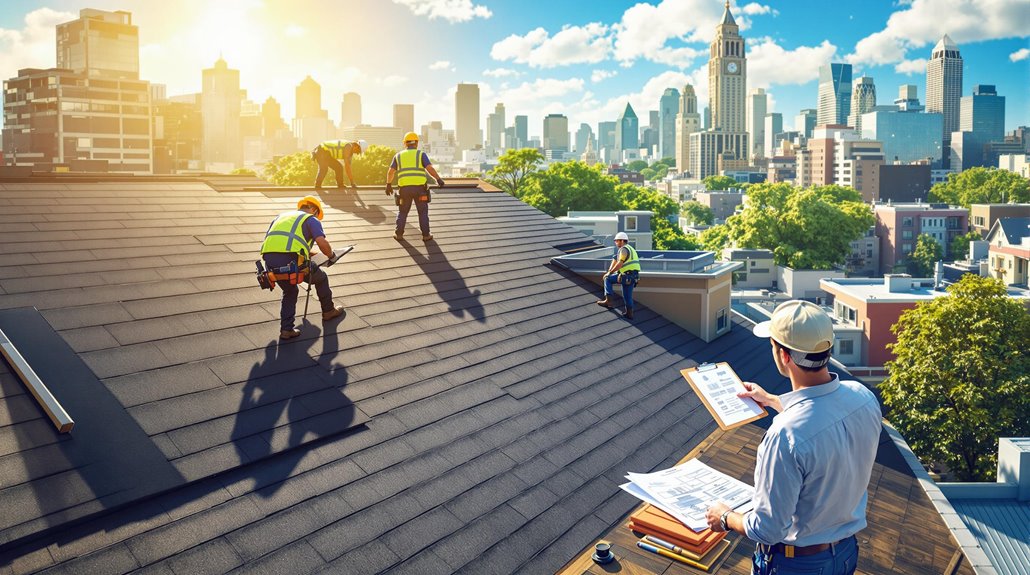
When undertaking a roof replacement project, property owners must navigate complex legal guidelines and IRS regulations that govern both the construction process and financial implications.
Property owners have specific legal responsibilities to guarantee compliance with local building codes, including obtaining necessary permits and adhering to zoning regulations.
From a tax perspective, roof replacements typically qualify as capital improvements rather than repairs, offering potential tax benefits through depreciation. The IRS requires thorough documentation to support these claims. It’s important for homeowners to conduct a roof repair vs replacement analysis to determine the most financially beneficial option. Capital improvements can be deducted over time, enhancing the overall return on investment for property owners. Additionally, keeping meticulous records of costs and the purpose of the work done will streamline the depreciation process, ensuring compliance with IRS guidelines.
Local authorities enforce strict compliance through inspections during and after construction, with non-compliance potentially resulting in significant fines.
Contractors must guarantee their work meets all regulatory standards while property owners should consult tax experts to properly classify and document the improvement for maximum tax treatment.
Material Choices and Their Classification
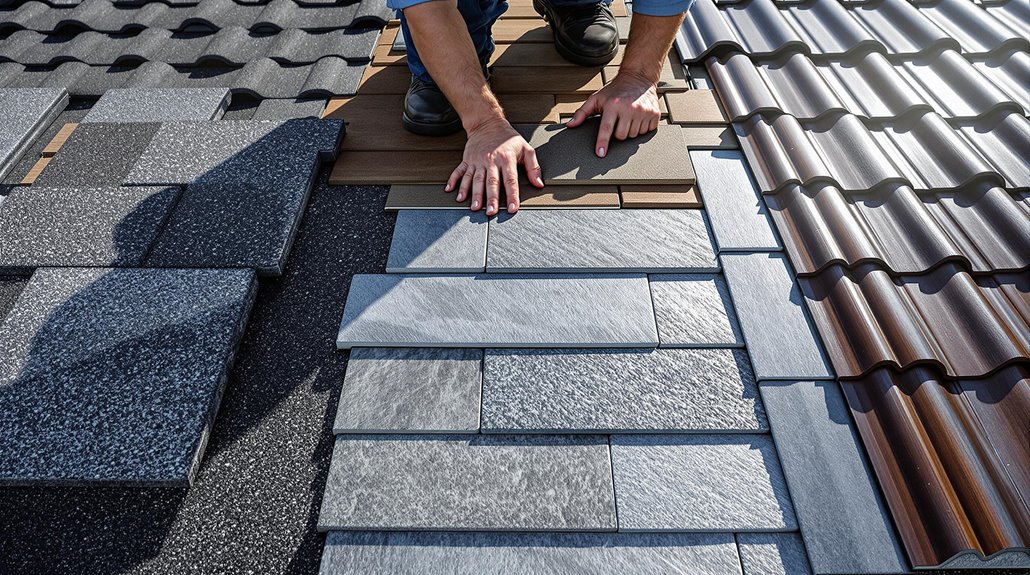
Beyond legal and tax considerations, the selection of roofing materials greatly impacts both the classification and longevity of a roof replacement project.
Material choices range from cost-efficient asphalt shingles to premium slate tiles, each offering distinct durability ratings and environmental impact profiles. The selection process requires careful evaluation of material longevity, installation complexity, and maintenance requirements.
- High-end materials like slate and metal demonstrate superior durability ratings and energy savings, though they involve greater upfront costs and installation complexity.
- Mid-range options such as clay and concrete tiles balance aesthetic appeal with moderate maintenance requirements.
- Entry-level materials like asphalt shingles offer cost efficiency but typically require more frequent replacement and provide lower environmental impact benefits.
Modern roofing solutions increasingly emphasize both durability and energy efficiency, reflecting evolving construction standards and environmental considerations.
Documentation Requirements for Tax Purposes

Proper documentation serves as a critical foundation for tax compliance when addressing roof-related expenses. Following documentation best practices, property owners must maintain thorough records that include detailed invoices, contracts specifying the scope of work, and receipts for all materials and labor costs.
Tax recordkeeping tips emphasize the importance of preserving before and after photos to verify the project's extent and maintaining a chronological log of the work timeline.
Essential documentation elements include start and completion dates, itemized expense records, and proof of payment. These records support depreciation claims for investment properties and help distinguish between repairs and improvements for tax purposes.
Property owners should organize and retain all supporting documentation to guarantee compliance with IRS regulations and facilitate accurate tax reporting.
Real Estate Investment Considerations
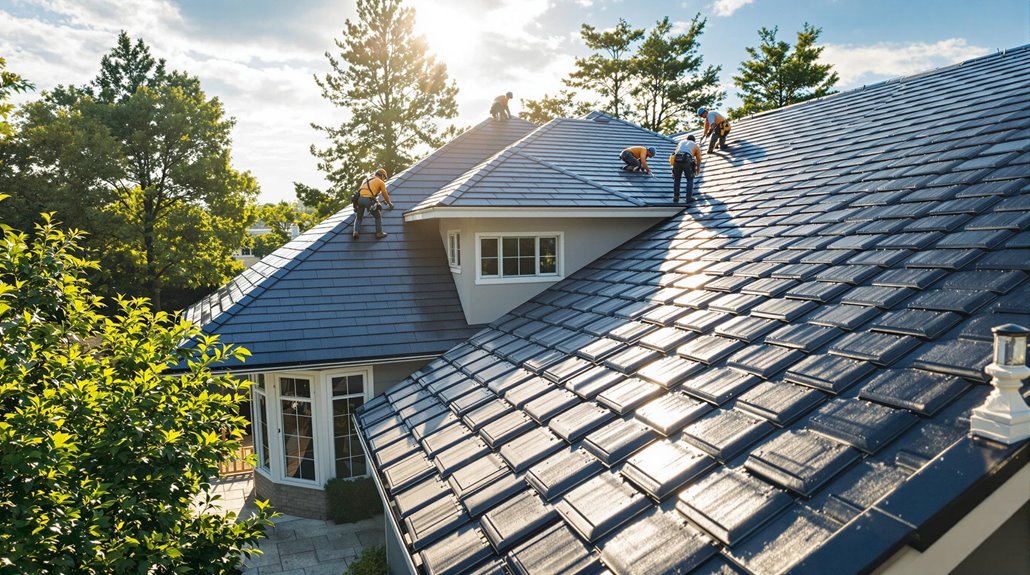
Understanding the real estate investment implications of roof replacement requires careful analysis of both financial and market-driven factors. Property investors must evaluate the substantial upfront costs against potential returns, which typically range from 60% to 80%.
Investment strategies often focus on enhancing buyer appeal through improved property condition and increased energy efficiency.
- New roofs noticeably impact property marketability by reducing maintenance concerns and simplifying the inspection process.
- High-quality roofing materials can yield superior returns in upscale markets while attracting eco-conscious buyers.
- Fix-and-flip investors particularly benefit from roof replacements due to accelerated sale timelines and increased property values.
Market analysis and property condition assessment remain essential for determining whether roof replacement aligns with investment objectives and local real estate trends.
Long-Term Financial Implications
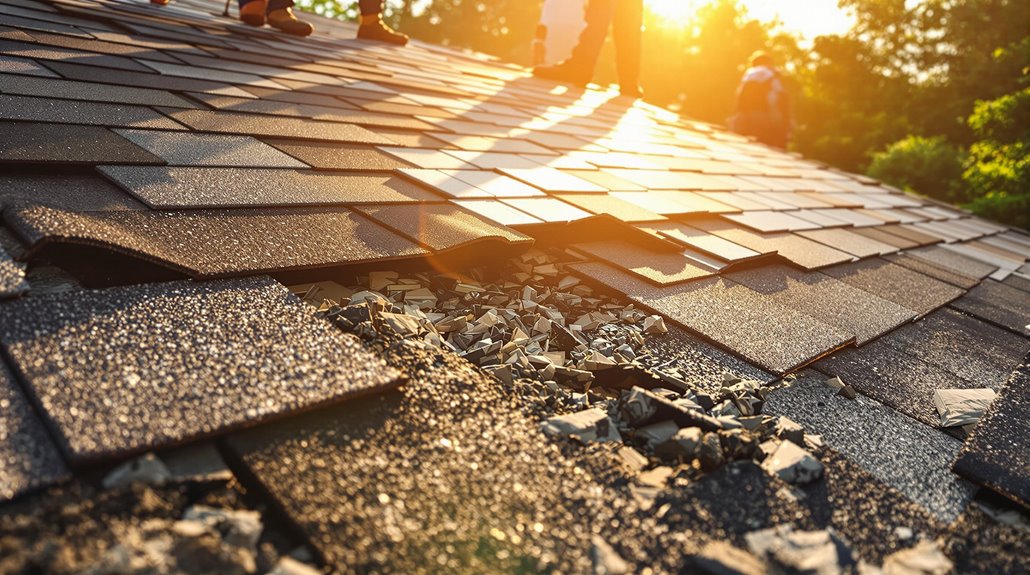
The long-term financial implications of roof replacement encompass multiple economic considerations that extend far beyond the initial investment. When properly executed through strategic financial planning, a roof replacement generates substantial long-term savings through reduced maintenance costs, enhanced energy efficiency, and improved property value retention.
Analysis of economic returns indicates that roof replacements typically recoup approximately 60% of costs during resale, while simultaneously providing ongoing benefits through decreased utility expenses and minimized repair needs. Additionally, the choice to replace an aging roof can significantly enhance the home’s curb appeal and market value, making it an attractive option for potential buyers. This increased desirability may further justify the reroofing cost compared to replacement, as the initial investment can lead to higher offers during the selling process. Overall, homeowners who invest in a new roof not only safeguard their property but also position themselves to benefit financially in the long run.
The capital expense classification of roof replacement also offers potential tax advantages, making it a significant component of property investment strategy. Insurance claims can further optimize the financial impact by reducing out-of-pocket expenses, while various financing options help manage the upfront investment, creating a balanced approach to long-term property asset management.
The Benefits Of Consulting A Public Adjuster For Roof Repairs
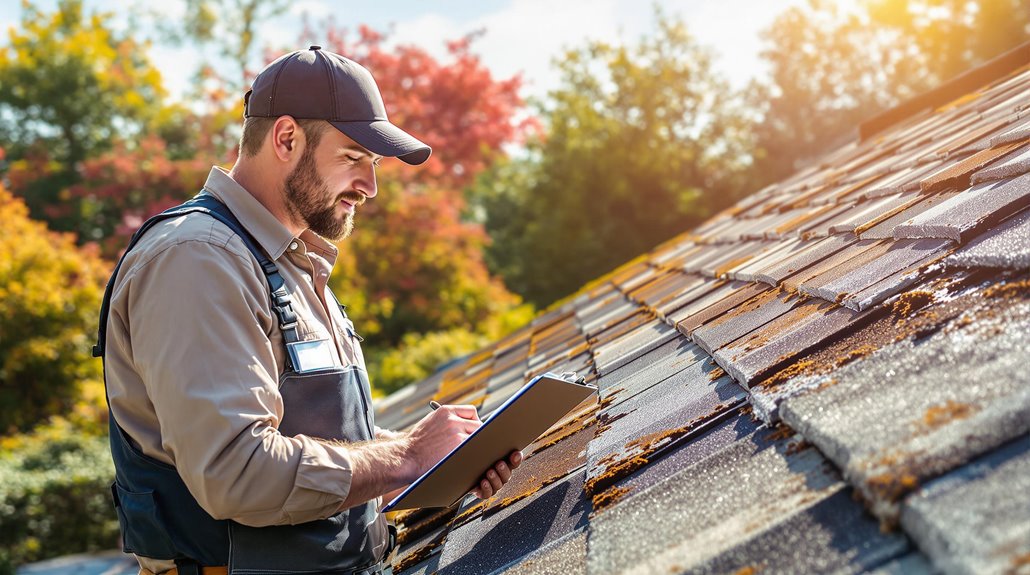
Public adjusters offer expertise in managing complex insurance claims while providing objective assessments of roof damage through detailed documentation and evidence collection.
Their professional management of the claims process streamlines negotiations with insurance companies, reducing the administrative burden on property owners.
Studies indicate that claims handled by public adjusters typically result in higher settlement amounts, often securing 20-40% more compensation compared to self-managed claims.
Expertise In Insurance Claims
Professional expertise plays an essential role when managing complex insurance claims for roof damage. Public adjusters possess extensive knowledge of claim strategies and policy nuances, enabling them to navigate intricate coverage details effectively. Their understanding of insurance terminology and documentation requirements guarantees thorough claim preparation and maximizes settlement potential.
- Documentation expertise: Systematic collection of evidence, including detailed photographs, expert assessments, and extensive damage reports.
- Policy interpretation skills: Analysis of coverage terms, exclusions, and specific conditions affecting roof damage claims.
- Strategic negotiation capabilities: Implementation of proven approaches to secure fair settlements while addressing claim disputes and denials.
These specialized skills help property owners overcome challenges in the claims process while guaranteeing proper compensation for roof-related damages.
Objective Damage Assessment
Conducting objective damage assessments through a public adjuster delivers substantial advantages for property owners facing roof-related insurance claims. These professionals employ systematic damage evaluation methods to identify both visible and concealed issues that may have insurance implications. Their expertise guarantees extensive documentation and accurate claim preparation.
| Assessment Component | Purpose | Benefit |
|---|---|---|
| Visual Inspection | Document visible damage | Complete coverage |
| Hidden Damage Review | Identify concealed issues | Prevent future problems |
| Policy Analysis | Match damage to coverage | Maximize claim value |
| Documentation Process | Collect evidence | Support claim validity |
| Professional Assessment | Expert evaluation | Accurate damage scope |
This methodical approach results in thorough claim documentation, precise damage scope definition, and enhanced settlement outcomes, ultimately protecting the property owner's interests throughout the claims process.
Streamlined Claim Process
When maneuvering through the complexities of roof-related insurance claims, enlisting a public adjuster's expertise considerably streamlines the settlement process. These professionals possess extensive knowledge of insurance policies and procedures, ensuring thorough documentation and effective communication between all parties involved.
- Public adjusters meticulously compile evidence, including detailed reports and photographs, strengthening the homeowner's position during negotiations.
- Their expertise in navigating intricate insurance terminology and claim procedures minimizes potential disputes and delays.
- Through skilled negotiation strategies, they advocate for fair settlement amounts while addressing any discrepancies in damage assessments.
The streamlined claims process established by public adjusters ultimately leads to more efficient settlements, reduced stress for property owners, and improved likelihood of appropriate compensation for roof-related damages.
Higher Claim Payouts & Settlements
Securing ideal compensation for roof-related insurance claims often hinges on the involvement of public adjusters, who consistently demonstrate their ability to secure higher settlement amounts for property owners.
Operating on a contingency fee basis, these professionals specialize in thorough damage documentation and skilled claim negotiation with insurance carriers.
Public adjusters leverage their extensive knowledge of policy terms, building codes, and construction costs to identify damages that might otherwise go unnoticed.
Their systematic approach includes detailed photographic evidence, thorough assessment reports, and precise cost calculations.
Through their expertise in policy interpretation and negotiation tactics, public adjusters frequently achieve settlement increases of up to 50% compared to initial offers.
This expertise proves particularly valuable when addressing complex roof damage scenarios involving multiple factors or compliance requirements.
About The Public Claims Adjusters Network (PCAN)
The Public Claims Adjusters Network (PCAN) represents a professional association that facilitates collaboration among licensed public adjusters who advocate for policyholders during insurance claims.
Public claims professionals within PCAN leverage their adjuster expertise to guide homeowners through complex insurance processes, ensuring fair compensation for property damages, particularly in roof replacement cases.
Key functions of PCAN members include:
- Providing detailed documentation and accurate calculation of losses for insurance claims
- Interpreting policy terms, conditions, and exclusions to maximize claim settlements
- Offering professional guidance on whether roof damage constitutes a repair or improvement
These specialized adjusters assist property owners in maneuvering through insurance requirements while ensuring proper classification of roof work for both insurance and tax purposes.
Frequently Asked Questions
How Does Solar Panel Installation Affect the Classification of a Roof Replacement?
Solar panel installation often transforms roof replacements into capital improvements due to necessary structural modifications, increased installation costs, and potential eligibility for solar incentives under IRS guidelines.
Can Insurance Payouts for Roof Damage Influence Repair Versus Improvement Classification?
With 60% of insurance claims affecting classification decisions, payout amounts notably influence repair versus improvement categorization, particularly when coverage exceeds basic restoration costs or includes upgrades to materials.
Do Local Climate Zones Affect the IRS Classification of Roof Work?
Local climate impact does not affect IRS classification of roof work. Tax implications remain consistent nationwide, based on whether the work constitutes structural enhancement rather than geographic or environmental factors.
How Do Green Roofing Systems Impact Tax Treatment and Property Assessments?
Green roofing systems qualify for tax incentives and property tax abatements while increasing property assessments through environmental benefits, energy efficiency improvements, and long-term capital appreciation of sustainable building features.
What Happens if Roof Replacement Spans Two Tax Years?
When roofing projects bridge fiscal periods, costs must be allocated between tax years, potentially affecting capital gains calculations and depreciation schedules based on project completion and service commencement dates.
References
- https://www.homeevolution.net/blog/is-roof-replacement-considered-a-capital-improvement/
- https://janneyroofing.com/blog/is-it-better-to-repair-or-replace-your-roof/
- https://www.stessa.com/blog/can-i-expense-new-roof-rental-property/
- https://www.atxcommunity.com/topic/12140-new-roof-on-a-rental-propertyexpense-or-capitalize/page/2/
- https://www.thetaxadviser.com/newsletters/2017/jun/expensing-roofing-costs.html
- https://www.heidlerroofing.com/blog/roof-replacement-a-capital-improvement/
- https://learn.assetlifecycle.trimble.com/blog/capital-improvements-vs-repairs-and-maintenance-why-they-matter
- https://www.fsresidential.com/corporate/news-and-articles/articles/maintenance-and-repairs-vs-capital-improvements-–/
- https://www.hemlane.com/resources/capital-improvements-vs-repairs/
- https://www.cloudroofing.com/blog/is-roof-replacement-tax-deductible

